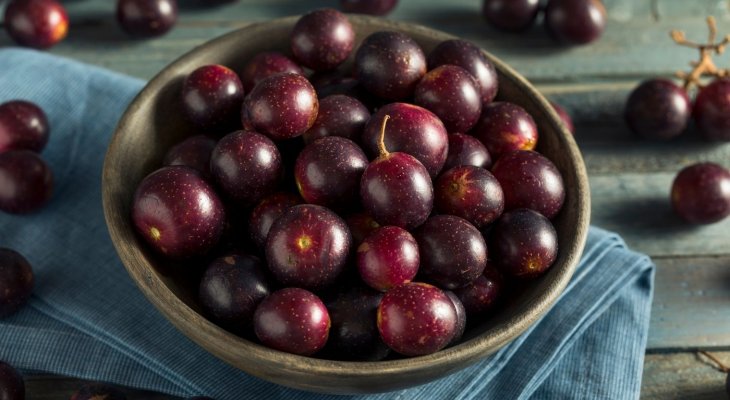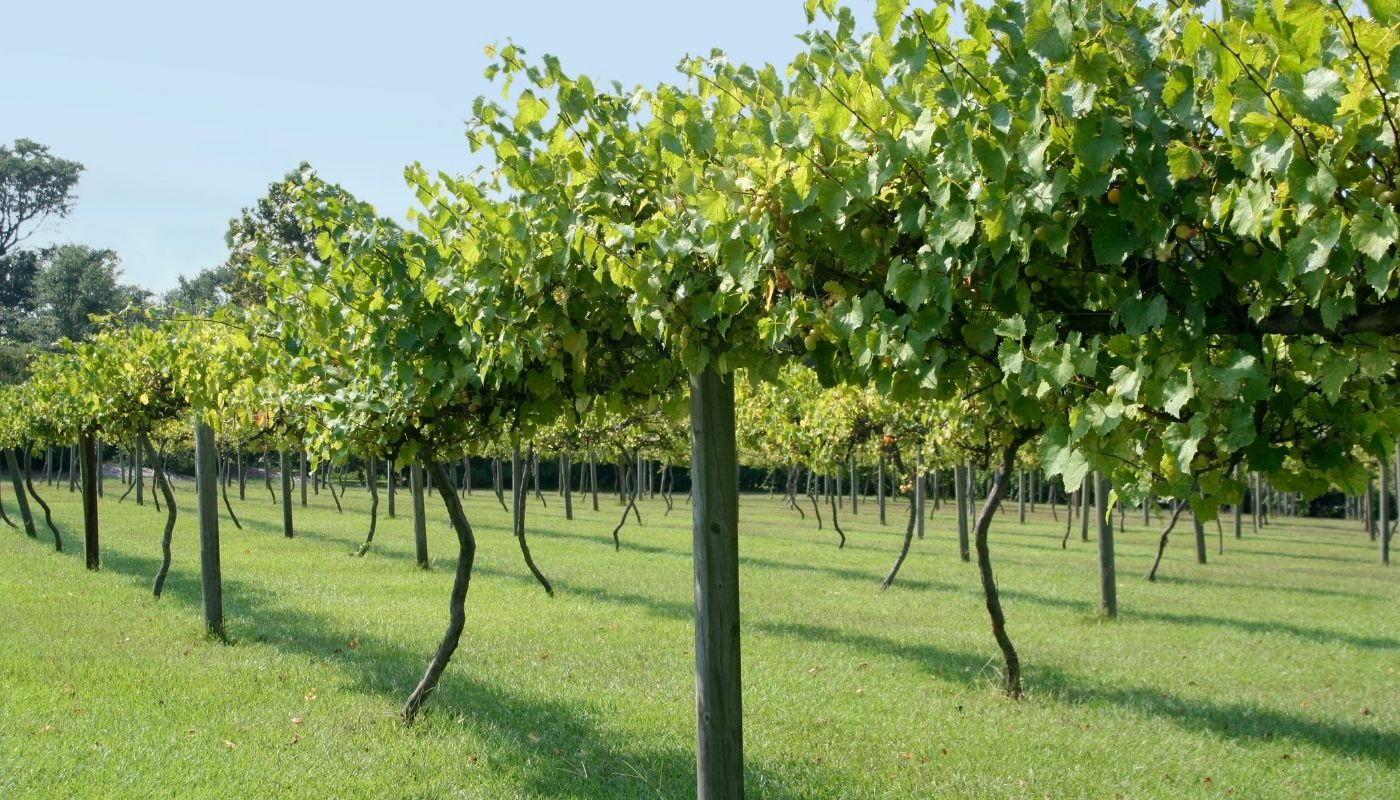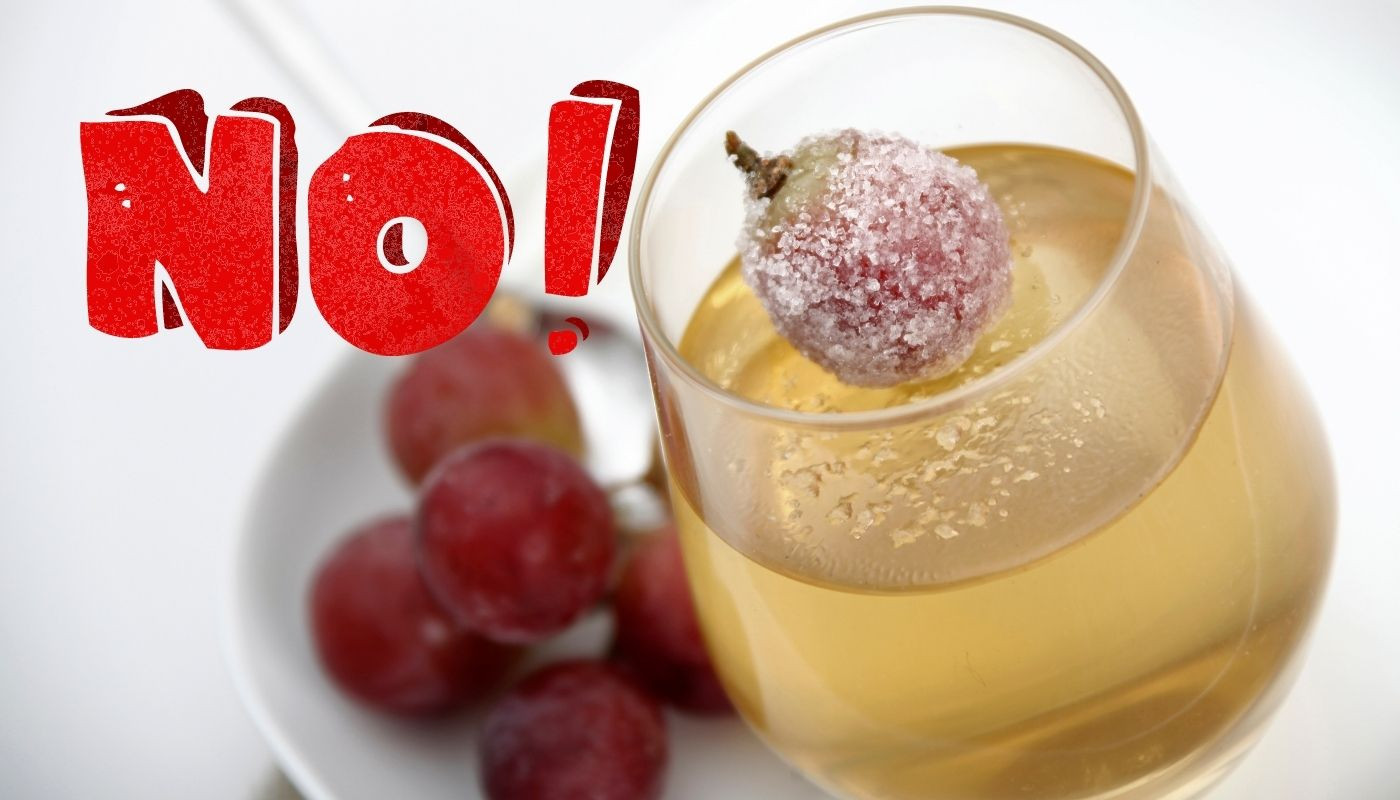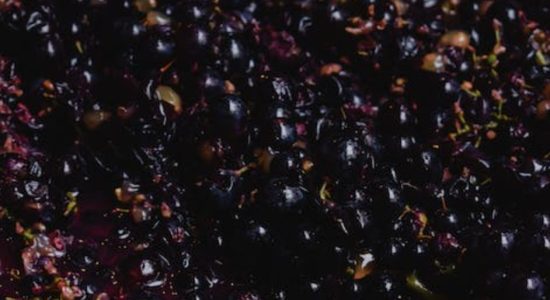How to Make Muscadine Wine in 7 Easy Steps

One of the lesser known truly American wines, muscadine wine is also one of the tastiest.
If you find it hard to locate in your area (as I did), you’ll need to know the best way to make it at home. It took me some time to find out just how to do this, though it’s actually quite simple.
How do you make homemade muscadine wine? At its core, the muscadine wine production process involves just a few ingredients (yeast, water, sugar, and grapes), a handful of steps, including grape mashing and fermentation, and a bit of time.
The process of making muscadine can be broken down into the following steps:
- Dissolve sugar
- Combine the mixture
- Sit for a week
- Strain
- Ferment for six weeks
- Strain & cap
- Bottle
Coming up, I’ll go over everything you need to know about muscadine wine, including how to make it yourself for a refreshing and quite different wine experience.
What Is Muscadine Wine?
Put simply, muscadine wine is the name giving to the sweet-tasting, sugary wine that’s made from the North American muscadine grape variety.
Because these grapes, which thrive in the Southeastern part of the United States, come in a variety of natural colors (from green to bronze to even black), the wines they produce vary in color as well, with both red and white options being available.
It shouldn’t come as a surprise if you can’t find muscadine wine in your area.
Unlike other grapes, muscadines aren’t commercially produced, meaning most of the wine is made locally in the South or at home.
Later on in this guide, I’ll tell you exactly how to do the latter so you can enjoy this peculiar wine, too.

What Does Muscadine Wine Taste Like?
In the past, muscadine wines generally only had one flavor: sweetness. This taste derives from the fact that muscadines themselves aren’t as sweet as other grapes. To compensate for this, winemakers would add extra amounts of sugar to help give the wine more flavor.
These days, however, there exists a range of flavors when it comes to muscadine wine. While most are to some degree sweet, there also exist some milder muscadine wines that are lighter on sugar and therefore more refreshing in the traditional sense.
FUN FACT: The driest of the muscadine wines clock in at 10g/L RS, meaning they’re not particularly sweet (but still somewhat of an unusual taste for many first-time drinkers).
Muscadine Wine Alcohol Content
How drunk are you likely to get off muscadine wine? First and foremost, that depends on how much you drink.
Generally speaking, however, muscadine wine isn’t as alcohol dense as some other alcohols like vodka, gin, or moonshine. In fact, muscadine’s 10% average ABV (alcohol by volume) registers as less than the average wine ABV, which sits at around 11.6%.
While this still means you’re more likely to get drunk off a sweet-tasting muscadine wine than you are from a can of your favorite beer, the drink itself is actually pretty mild in the grand scheme of things.
Muscadine Wine Recipe in 7 Easy Steps
“Don’t fix what’s not broken.” I’m sure you’ve heard the old saying by now. This wisdom holds true for muscadine wine, as well.
Let’s take a look at a great-tasting classic recipe that you can easily make at home.
You’ll need:
- 1 quart muscadine grapes, mashed
- 3 quarts water
- 6 cups granulated sugar
- 7 grams yeast
How to make:
#1 Dissolve Sugar
Start by pouring your water into a clean gallon-sized container (it must be glass). Once you’ve done this, add in your sugar.
#2 Combine the Mixture
Once the sugar has dissolved, add in the mashed muscadine grapes. Lightly add the dry yeast to the top of this water, grape, and sugar mixture. Once you’ve done this, cover with a cheesecloth and place in a dark and cool place to sit undisturbed for 24 hours.
#3 Sit for a Week
Come back to the mixture after a full day has transpired, then stir the mixture well. Cover again and repeat this same activity for a week, being sure to completely cover the mixture every time. Make sure that you are stirring the mixture at the same time every day.
#4 Strain
After a week has passed, strain the liquids into another gallon container that has an airlock. The airlock is crucial, as it prevents the introduction of oxygen and the facilitation of the oxidation process. Fill the gallon with water until it’s full.
#5 Ferment for Six Weeks
Return the mixture to your dark and cool place and ferment for a period of six weeks.
#6 Strain and Cap
Once you’ve fermented the mixture, strain it into another clean gallon container. Then, in order to ensure fermentation is complete, cap lightly for three days.
#7 Bottle
After this is complete, the wine is ready to be bottled!
Make sure that your wine bottles are secure at the top for the reasons listed above and store in the fridge for best flavor.
Read also: Finding the Best Wine Coolers (Compressor vs Thermoelectric)
How Many Pounds of Muscadines Make a Gallon of Wine?
Trying to make a gallon of the sweet-tasting drink for your next party or event? Let’s examine just how many pounds of muscadines you will need to make a gallon of wine: while no number will be exact, the general rule of thumb is that six pounds of muscadines will make a gallon of wine.
While muscadines can range in size from standard grape size to being as large as golf balls, what matters more in this context is the amount of grapes by pound you include in your recipe.
REMEMBER: not all of the flavors from these muscadines will be reaching the wine stage, as much is lost during the siphoning and fermentation process.
You may have to play around with your own muscadine wine recipe to find out just how much you need for a gallon of wine.

What Is the Best Yeast for Muscadine Wine?
It’s certainly possible to make great-tasting muscadine wine with a variety of yeasts. With that being said, I do have my favorites.
At the top of the list is the Red Star Premiere Cuvee Yeast. This neutral yeast, designed for red wines, allows the natural flavors of the muscadine wine and your other added ingredients to come through without imposing its own yeasty flavor onto the alcohol.
You’ll need to be careful, of course—and this is for any yeast you choose to use—not to leave any trapped yeast in the mixture before bottling it, which can alter the flavor of the final product.
Read also: Can You Make Alcohol Without Yeast?
Muscadine Wine Health Benefits
Though muscadines are one of the lesser-known grapes, these fruits have been described as perhaps the most “super” of all superfruits. That’s because the grapes contain a very high level of antioxidants, ellagic acid (a natural obesity combatant), and resveratrol.
Knowing this, let’s take a look at some potential health benefits of muscadine wine:
– Reduced Risk of Heart Disease
It’s no secret that red wine can help prevent heart disease.
Muscadine wine is no exception. Notably, resveratrol and other antioxidants found in the wine help combat the onset of heart disease by working to lower cholesterol and high blood pressure. Not bad for a drink that’s commonly seen as dessert!
– Improved Digestion
Though it may not be pleasant to think about, the presence of a variety of bacteria in the gut help regulate digestion. An abundance of the good kind, and you’ll largely be healthy down there.
Too much of the band kind, and you’ll notice problems with your digestion.
It’s believed that moderate consumption of muscadine wine can help facilitate the growth of good bacteria to promote better gut health (and therefore better digestion).
– Decreased Inflammation
Inflammation, a condition brought on by the introduction of free radicals into your cells, can potentially be reduced through consumption of muscadine wine.
The aforementioned free radicals also lead, quite importantly, to oxidative stress. Of note, the antioxidants present in muscadine wine may help to eliminate free radicals, decreasing oxidative stress and reducing the amount of inflammation in your body.
Because oxidative stress has been linked to conditions such as dementia, diabetes, cardiovascular disease, and osteoporosis, drinking moderate amounts of muscadine wine may help to prevent the onset of these diseases.
Of course, because muscadine wine is ultimately still alcohol, you’ll need to be careful not to turn a good thing into a bad thing.
REMEMBER: Excessive consumption of muscadine wine, as with other alcohols, can be detrimental to your health, so be sure to keep your consumption moderate if the purported health benefits above are one of your end goals with making or purchasing muscadine wine.

Muscadine Wine Brands
Want to try the wine out before committing to making your own homemade version? Then you’ll need to know the best brands. Given this, let’s take a look at three of the most popular muscadine wine brands on the market today:
Duplin Winery
Based in North Carolina, Duplin Winery offers a wide selection of muscadine wines, from its famous Naughty and Nice Sweet White to lesser-known items such as Hatteras Red, Carolina Red Sweet Muscadine, and American Port.
Chateau Elan
Further South in the Peach State, Chateau Elan offers its own versions of muscadine wine.
The brand’s most famous product is its flavorful ‘Duncan Creek’ Muscadine, a wine produced locally in Braselton, Georgia. Price wise, this wine is slightly cheaper than the Duplin Winery options (though both are quite cheap as far as wines go).
San Sebastian Winery
The Florida-based San Sebastian Winery brand also offers quality muscadine wines.
Perhaps the best-known product from this brand is the Vitner’s Red, a strong red wine that is rich with sweet muscadine flavor. The brand’s Rosa wine is known for its higher-price tag and good quality.
Muscadine Wine Is Not Moscato
Though the names of the two wines are quite similar, as is the tendency to drink both with sweet foods and desserts, muscadine wine shouldn’t be confused with Moscato wine.
While Muscadine comes from the indigenous North American muscadine grape, Moscato wines have a rich history in Europe and Africa. Moscato wine itself hails from Italy and boasts a more naturally sweet flavor than muscadine wine.
Generally speaking, this alcohol is more inviting to first-time drinkers, though it lacks the acquired and quite unique taste that comes with most muscadine wines. Confusing the two can lead to quite an unexpected flavor experience!

What Do You Eat with Muscadine Wine?
Like Moscato wines, muscadine wines are generally eaten with desserts.
That’s because the added sweetness of the sugar to muscadines is a natural complement to sweet foods and desserts. With that being said, however, you shouldn’t limit your wine-drinking to after the main course has been cleared away.
The unique flavor of muscadine wine meshes well with a variety of other foods, as well, especially meats.
Because the wine is a product of the South, it perhaps goes best with Southern foods such as BBQ, fried foods like porkchops, and ribs.
You may be surprised at just how well the two go together (a meal worth trying just for its unique location in the Southern cultural context, let alone for the great taste)!
Conclusion
Making your own muscadine wine at home is actually quite simple.
In this guide, I went over a classic muscadine wine recipe that you can use to great success in your own home. I also covered some basic information about muscadine wine, including what it is, how it tastes, and its purported health benefits, to give you a more comprehensive view of this lesser-known Southern wine.
If you’re looking to try muscadine wine for the first time, you can’t go wrong with the quality brands listed above.
Inexpensive and good tasting, muscadine wine from these brands is sure to offer a unique flavor experience.
Once you’re comfortable and familiar with the taste of popular muscadine wines, it’s time to use the recipe above to make your own. Be sure to check back with this guide if you have any questions or concerns along the way!







